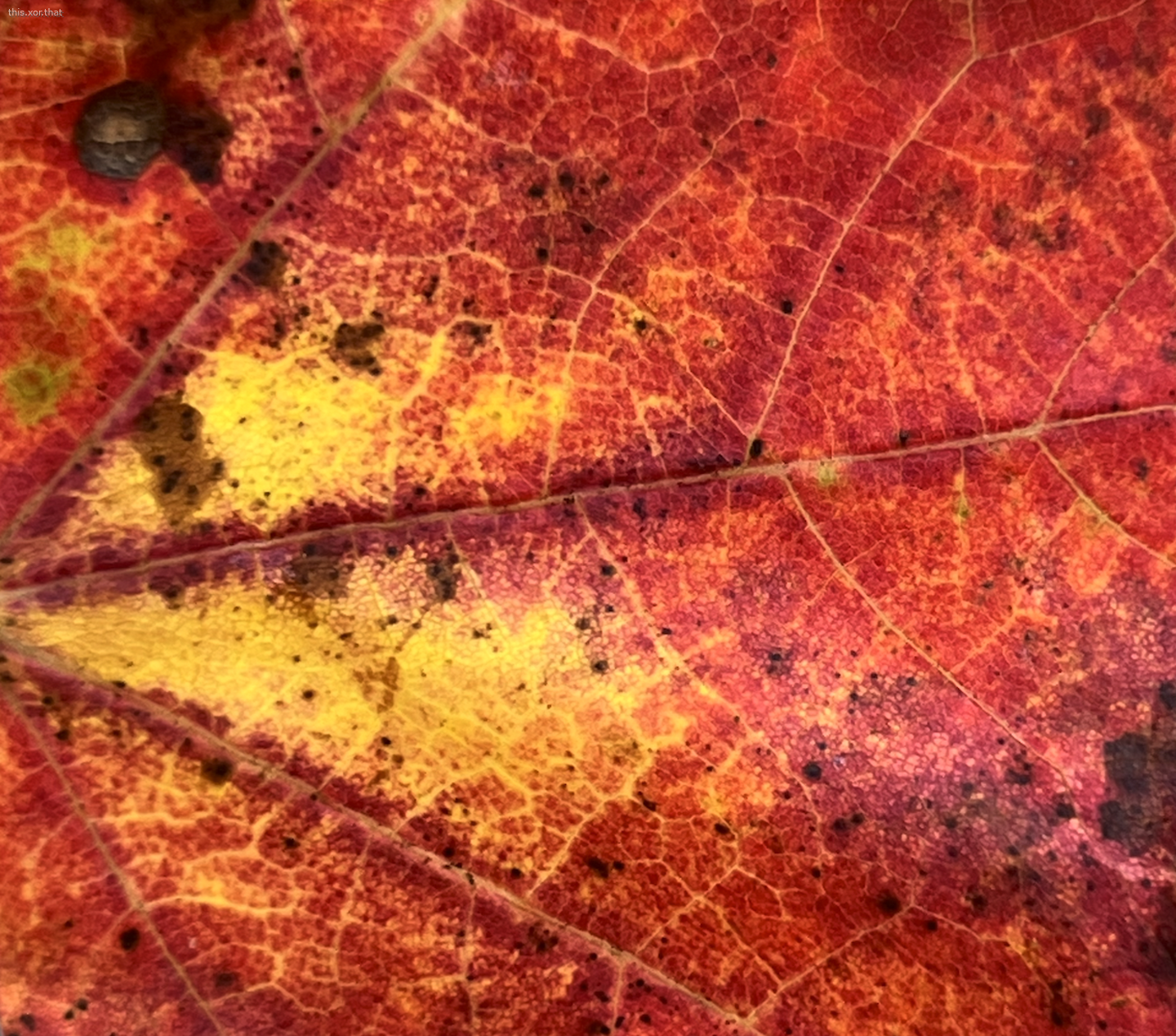weeknotes: thesis, reading, nature walk
Oh man, I’m publishing this two weeks late.
Leaves

On Saturday, I visited the Mass Audubon’s Habitat Education Center and Wildlife Sanctuary, up a extremely steep hill I didn’t know Boston had. My legs felt like I was back in San Francisco!
Since my thesis is about nature walks, I wanted to make time to walk in nature and look for birds. I didn’t see many birds, but the leaves are changing color. It’s interesting how some leaves were brown in the trees and others were green on the ground. Also, the gradients and color textures caught my eye. I could try coding that! After I got home, I dug into the color absorption of the different pigments in the leaves and how they change while the tree is reabsorbing its nutrients.
Apparently, the oranges and yellows from the carotenoids, are always there. (An aside, the carotenoids are the same thing that makes many birds yellow, and they often get it from plants! So there are pigments floating through the food chain!)
The chlorophyll looks green because it’s absorbing a lot more reds and blues to turn into energy and reflecting more greens. In the fall, the leaf starts taking its nutrients back to its roots to prepare for winter. It breaks down the chlorophyll because if that produces energy when the rest of the leaf is taken apart, it’ll damage the leaf. So with less chlorophyll, the carotenoids start to stand out. Some trees, like red maple, also produce the red anthocyanin to protect from the light.
With that knowledge, I’m brushing off the leaf system to help these textures.
Thesis
Up until now, I’ve been frantically reading books that might offer a perspective on my thesis questions. This week, I had the breakthrough where I could shortcut this by asking specific people my exact questions!
Besides that, I finished my thesis proposal draft. It was a big push to try to capture what I want to do. I tried to include all of my ways of doing things and a bunch of different deliverables. After feedback and time, I’m ready to, ah, “kill my darlings” and simplify the parts that aren’t core to the thesis. It’s helping that I’m trying to explain my thesis to people, and each time my summary becomes more streamlined, and I learn what resonates.
Reading
I read the short essay “Carrier Bag Theory of Fiction” by Ursula Le Guin. It’s capturing this thing I’m trying to head towards, building a framework to not help you find the perfect thing, but regions of interestingness.
If it is a human thing to do to put something you want, because it’s useful, edible, or beautiful, into a bag, or a basket, or a bit of rolled bark or leaf, or a net woven of your own hair, or what have you, and then take it home with you, home being another, larger kind of pouch or bag, a container for people, and then later on you take it out and eat it or share it or store it up for winter in a solider container or put it in the medicine bundle or the shrine or the museum, the holy place, the area that contains what is sacred, and then next day you probably do much the same again — if to do that is human, if that’s what it takes, then I am a human being after all. Fully, freely, gladly, for the first time.